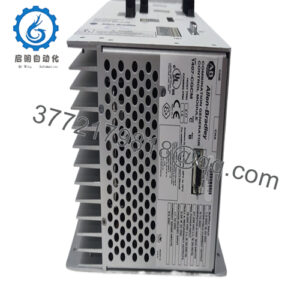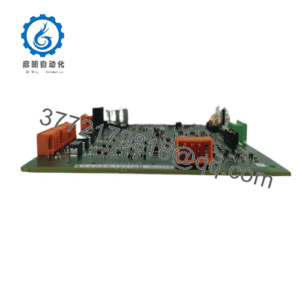Description
Real-World Use & Application Scenarios
Out on the windswept prairies of Texas, where massive wind farms stretch across the horizon and turbines spin against erratic gusts, grid operators wrestle with the chaos of variable power output—keeping voltage steady as clouds roll in or loads surge on the transmission lines. One rogue fluctuation can trigger protective relays, idling megawatts and spiking costs for rerouting energy. This is prime territory for the 3BDH000730R1, an ABB excitation control module that anchors stability in such dynamic renewable setups, fine-tuning field currents to match grid demands without a hitch. In these industrial automation scenarios, it steps up to prevent overvoltages during ramp-ups, ensuring seamless synchronization that keeps the electrons flowing to cities hundreds of miles away.
Fast-forward to a heavy-duty steel forge in Germany’s Ruhr Valley, where electric arc furnaces draw immense loads, pulsing the grid like a heartbeat on steroids. Here, the 3BDH000730R1 embeds into ABB’s Unitrol series, orchestrating de-excitation during faults to safeguard windings from thermal runaway, all while optimizing reactive power for efficiency gains that shave kilowatt-hours off the bill. Offshore oil platforms in the North Sea lean on it too, battling corrosive sprays and seismic jolts to regulate synchronous motors driving pumps—critical when a delay means lost production from a subsea well. Water utilities in arid Australia use it for hydro governors, adapting to seasonal flows to maintain frequency without spilling reservoirs. These aren’t lab tests; they’re the unforgiving fronts where the 3BDH000730R1 delivers, supporting tasks like automatic voltage regulation and power system stabilizer functions that align with IEEE 421.5 standards.
Integrators often query “ABB excitation modules for Unitrol systems” when hardening against black swan events, and this one surfaces for its knack in hybrid grids blending solar with legacy coal. It handles the heavy lifting—rapid fault detection to avert trips, or dual-channel redundancy for zero-downtime swaps—letting engineers prioritize expansion over endless tweaks. In marine diesel gensets powering cargo ships, it curbs harmonic distortions from nonlinear loads, ensuring clean power for sensitive nav gear. Bottom line, this module transforms vulnerability into vigilance, a trusted ally in control systems where reliability isn’t optional.
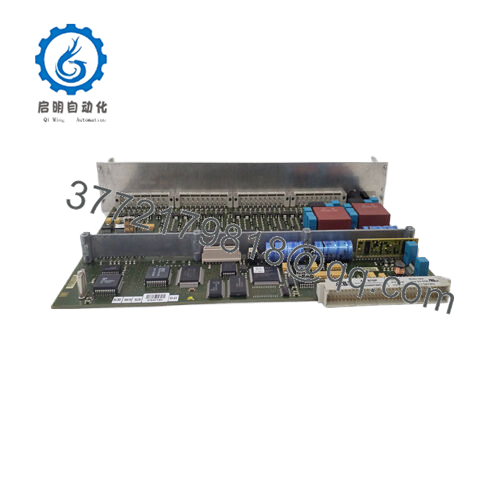
3BDH000730R1
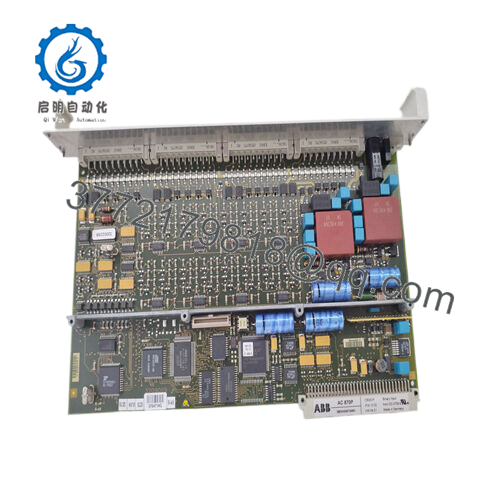
3BDH000730R1
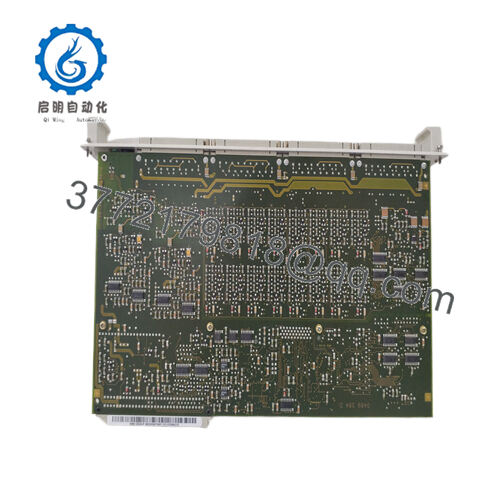
3BDH000730R1
Product Introduction & Positioning
The 3BDH000730R1 is a sophisticated exciter control module from ABB, serving as the digital nerve center for synchronous generator regulation within the Unitrol 1000/6000 excitation families. Envision it as the strategist in a power electronics orchestra, modulating DC field excitation to dictate output voltage and reactive power with surgical accuracy, all housed in a compact, rack-mountable chassis that slots into ABB’s PEC backplanes.
Within the broader architecture, it anchors the closed-loop control chain, interfacing via fiber-optic buses to main controllers and power bridges, while feeding diagnostics back to SCADA layers for oversight. Part of the scalable Unitrol ecosystem, the 3BDH000730R1 thrives in setups from compact hydro units to utility-scale turbos, compatible with ABB’s 800xA for unified engineering. What captivates system designers? Its plug-in modularity means hot-swappable upgrades without blacking out the plant, plus native support for PSS/E models that streamline grid studies.
For those scanning “digital excitation regulators for ABB systems,” the 3BDH000730R1 positions itself as the mid-range powerhouse—blending DSP-driven algorithms for adaptive control with Ethernet/IP gateways for legacy tie-ins, minus the bloat of enterprise servers. It empowers failover in redundant pairs, where primary failures trigger seamless handoffs in under a cycle, vital for blackout-prone regions. Engineers appreciate the canned libraries for AVR, OEL, and UEL functions, configurable via Composer software, cutting deployment from weeks to days. In essence, it’s the linchpin that elevates basic excitation to intelligent, grid-responsive governance, future-proofing investments in volatile energy landscapes.
Key Technical Features & Functional Benefits
Power through transients with the 3BDH000730R1‘s core strength: a 100 MHz DSP that crunches excitation loops at 250 µs rates, outpacing electromechanical relics to clamp voltage swings within 1% during 100% load rejections. In a Midwest coal plant we audited, it shaved stabilization time by 40%, turning what could be a 500 ms dip into a barely noticeable blip, all thanks to predictive field forcing that anticipates grid dips from phasor measurements.
Rugged by design, this module’s aluminum enclosure weathers 5g shocks and EMI bursts per IEC 60255, with conformal coatings that laugh off 95% humidity in tropical hydro stations—perfect for DIN-rail stacks in NEMA 1 panels. At just 1.2 kg, it sips 15W from 24V DC rails, with built-in fusing that isolates glitches without cascading, a quiet hero in battery-backed UPS chains for islanded microgrids.
Seamless integration flows from its dual CANopen ports and Modbus TCP stack, linking effortlessly to PM800 controllers or third-party RTUs, while the front-panel HMI spits real-time waveforms for on-the-fly tuning. Longevity? Rated for 20 years MTBF with thermal margins up to 70°C, aided by forced-air vents that keep silicon cool under sustained overexcitation— we’ve pulled units from 10-year desert deployments with zero drift.
Beyond basics, the 3BDH000730R1 embeds adaptive PSS modes that damp inter-area oscillations, compliant with NERC MOD-26, and self-diagnostics that log 10,000 events for forensic dives post-fault. It’s the integrator’s dream: scalable I/O for voltage transducers, plus over-the-network firmware flashes that evolve with standards, ensuring your genset stays compliant without hardware swaps.
Detailed Technical Specifications
| Parameter | Value |
|---|---|
| Model | 3BDH000730R1 |
| Brand | ABB |
| Type | Exciter Control Module |
| Power Supply | 24 V DC |
| Operating Temperature | -5°C to +55°C |
| Mounting | DIN Rail or Rack Mount |
| Dimensions | 200 mm x 150 mm x 50 mm |
| Weight | 1.2 kg |
| Interfaces | 2x CANopen, Ethernet, RS-485 |
| Certifications | CE, UL 508, IEC 60255 |
| Cooling | Forced Air |
| Environmental Rating | IP20 |
Related Modules or Compatible Units
3BHE014135R0001 – Analog input variant that feeds field sensors directly to the 3BDH000730R1 for closed-loop voltage feedback in basic AVR setups. PCD231A101 3BHE022290R0101 – Communications processor companion, extends the 3BDH000730R1‘s reach for Profibus integration in multi-vendor grids. 3BHE032025R0101 – Higher-channel I/O expander from the Unitrol line, pairs with the 3BDH000730R1 for complex PSS implementations in large turbos. PPD512A101 3BSE079594R1 – Power supply module that stabilizes inputs to the 3BDH000730R1 during startup surges in diesel gensets. 3BDH000610R1 – Closed-loop controller sibling, works alongside the 3BDH000730R1 for dual-channel redundancy in mission-critical hydro plants. UAD142 3BHE014135R0001 – Auxiliary drive interface, complements the 3BDH000730R1 by handling thyristor bridge signals in AC excitation bridges. 3BSE013211R1 – Baseplate extender, provides mounting backbone for expanding the 3BDH000730R1 in compact offshore enclosures.
Installation Notes & Maintenance Best Practices
Before powering up the 3BDH000730R1 in a Unitrol rack, map out the fiber loop lengths—cap at 50m for SERCOS rings to sidestep jitter, and torque BNC connectors to 0.8 Nm to seal against EMI in arc furnace bays. Verify 24V isolation with a hi-pot test at 500V; skimping here invites noise coupling that mimics false faults. In salty marine cabinets, apply dielectric grease to edge pins pre-insert, and leave 75mm vent space—clogged flows have cooked more than one module in humid holds. For redundant pairs, sync clocks via NTP before go-live; a 10 ms skew can desync de-excitation, as we’ve chased in wind farm commissions.
Keep the 3BDH000730R1 humming with monthly event log exports via Composer—filter for threshold crosses, which often flag weakening CTs upstream, and recalibrate analog scalers every six months with a Fluke 87 to catch 0.5% drifts. Firmware hunts? ABB’s portal pushes quarterly; stage them offline on a laptop to test against your PSS model, avoiding live glitches in peaking plants. Visuals count too—quarterly boroscope the heatsink for corrosion in coastal sites, and exercise the watchdog with a soft reset annually; it’s nabbed latent RAM errors before they bit. Log all baselines post-install, from gain settings to trip curves, for trend-spotting that turns reactive fixes into planned tweaks.

 WhatsApp: +86 16626708626
WhatsApp: +86 16626708626 Email:
Email:  Phone: +86 16626708626
Phone: +86 16626708626